Blue and blue ageratum: the best varieties and tips for growing
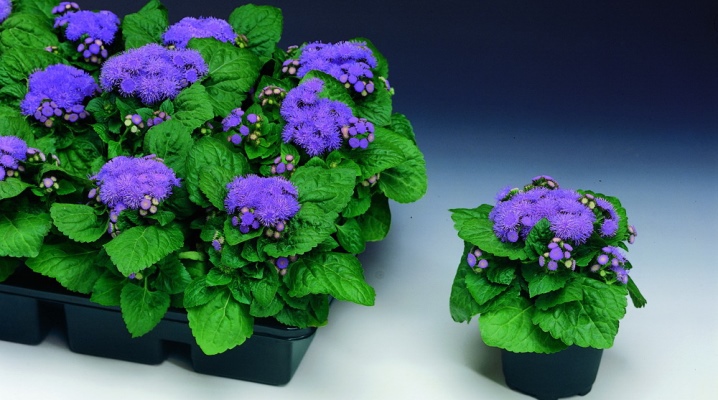
Recently, ageratum flower, very unusual in its color, has become more and more popular among gardeners. This blue plant can be seen growing both in private areas and in public places. What are the features of this plant? What varieties of ageratum are there? How to properly care for them? You will find answers to these and other questions in our material.
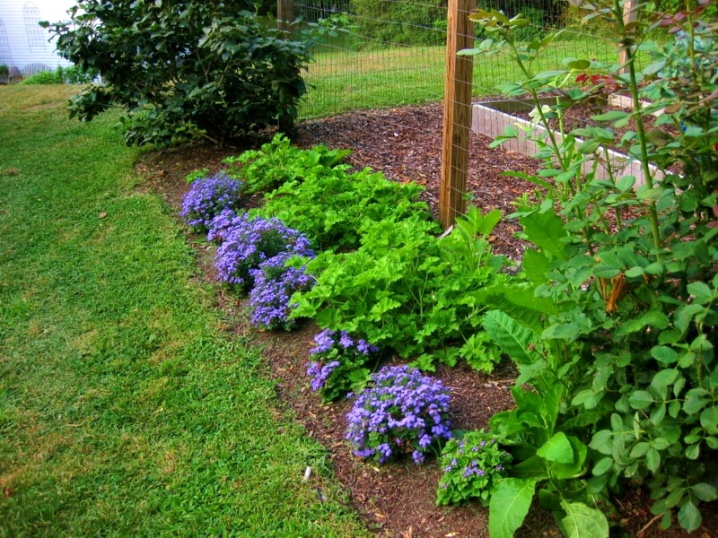
Peculiarities
Ageratum is a rather unusual culture, it has blue or blue flowers that bloom quite profusely and are fluffy in structure. Ageratum is not very picky about care measures. If we turn to history, it should be noted that the discovery of this flower belongs to the famous collector W. Houston. It was in honor of him that these flowers were named (Houston ageratum).

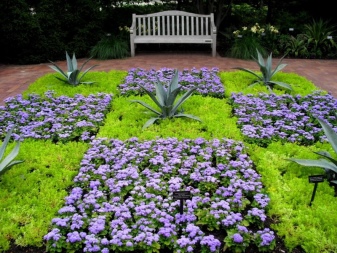
Generally speaking, in the wild and natural habitat, this plant is perennial... However, on the territory of our country, it is grown and perceived as an annual flower. Ageratum belongs to the Astrov family. Due to the rather intense flowering processes, as well as the aesthetically pleasing appearance, ageratum is often used in landscape design.
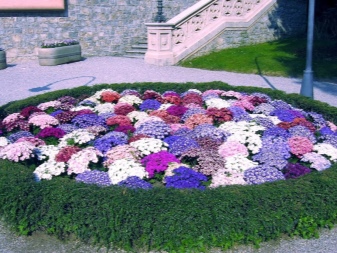
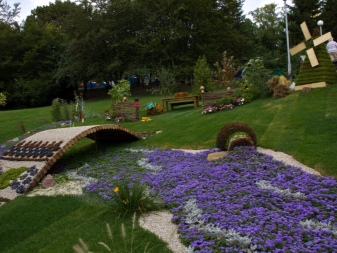
So, with his help, flower beds are decorated, and also create unusual flower arrangements.
Overview of species and best varieties
Today, among the representatives of the Houston ageratum (the second name is the Mexican ageratum), several separate species and varieties of plants are distinguished. In our material, we will consider a detailed description of the most popular and demanded among gardeners in our country.
- "Blue mink". The variety, by its botanical nature, is an ornamental shrub. In height, it can reach 30 cm.The flowers of the ageratum of this variety grow in the form of baskets, their diameter usually does not exceed 5 cm.

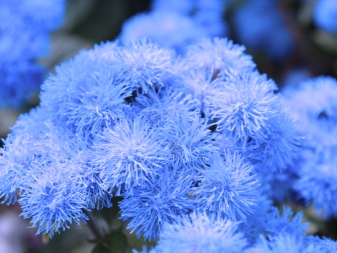
- "Blue ball". This ageratum variety is a dwarf ball-shaped plant. At the same time, the total diameter of the plant can reach 18 cm. The maximum height of the bush is about 30 cm. Distinctive features of the Blue Ball variety are the presence of voluminous leaves, the lower part of which has intense pubescence. In addition, the size of the inflorescences of the bush can reach 2 cm, and the flowers have a bright and rich lilac-blue color. The variety is distinguished by high indicators of drought resistance. The flowering period is June-October.
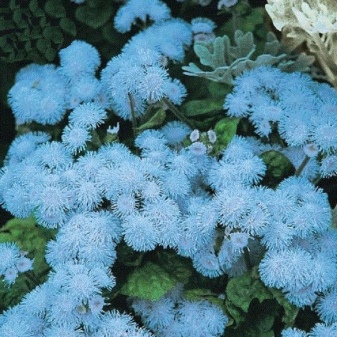
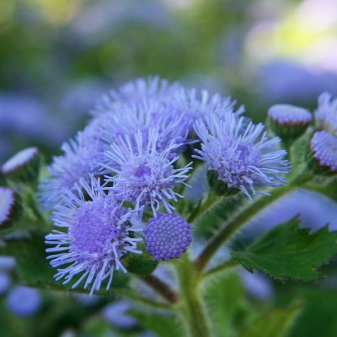
The "blue ball" is often used in landscape design, combining the plant with zinnia, marigolds and calendula.
- Aloha Blue. This variety is rather small and blooms early. It is often used to decorate flower beds. In addition, Aloha Blue is most often grown as seedlings for sale.
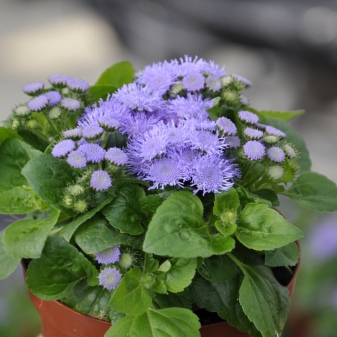
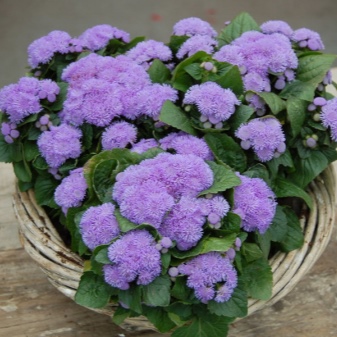
- "Blue muff". This variety is especially popular among gardeners, as the flowers have a rich blue hue. By themselves, they are quite fluffy and grow in the form of baskets.
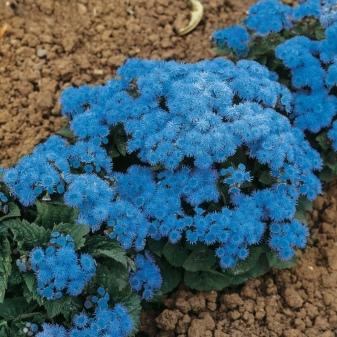
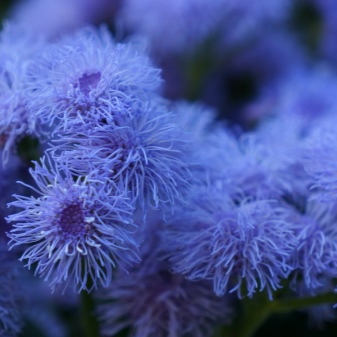
- Blue Hawaii. Ageratum "Blue Hawaii" in its height does not exceed 15 cm. Due to its compact size, it is often used for border decoration, growing in containers.
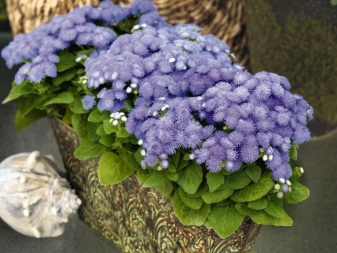
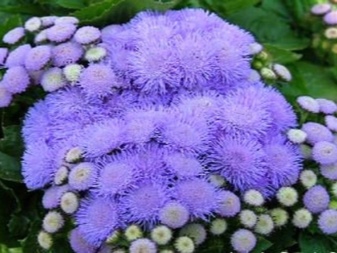
In addition to the varieties described above, such types as "Blue Planets", "Blue Mink", "Blue Danube", "Blue Sea" are popular.
Landing rules
To begin with, it should be noted that the most traditional way of planting ageratum is growing a plant from seed... However, before starting this process, it is necessary to germinate the seedlings. In order to do this, it is necessary to sow the seeds in boxes or containers. It is advisable to carry out this procedure in the middle of spring. In this case, planting a plant in open ground is allowed only when the climatic situation stabilizes and the spring frosts end.
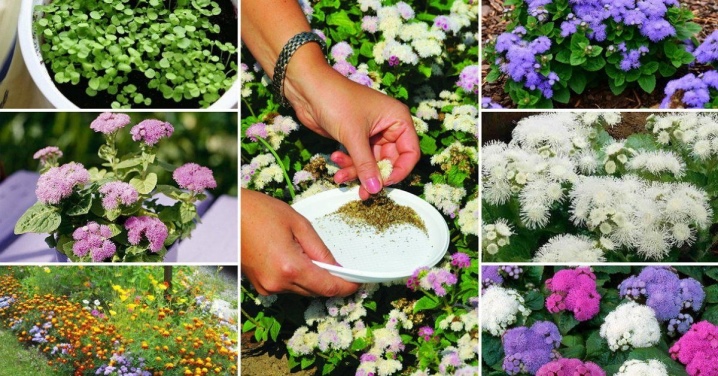
Before proceeding with the direct planting of the plant in open soil, you should carefully choose a permanent place for flower growth... It must be loosened or even dug up. Also, pay special attention to preparing the optimal potting mix. It should consist of peat, humus and sand in equal proportions. The process of sowing seedlings itself is recommended to be carried out at the end of March.

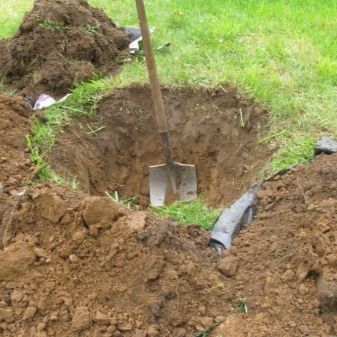
When sowing, it should be borne in mind that ageratum is a thermophilic tropical plant, therefore, sprinkle seedlings with soil with great care.
Experienced gardeners as well as botanists young ageratum seedlings recommend diving twice... In this regard, they should be transferred to a separate dish only after the second time. The process of growing seedlings should be carried out in dry air, as dampness and moisture can negatively affect the condition of the plant. In addition, the soil should not be moistened unnecessarily. If you grow seedlings in greenhouses, then do not forget to ventilate on a regular basis.
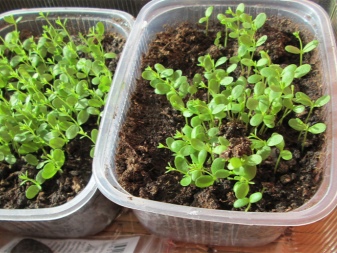
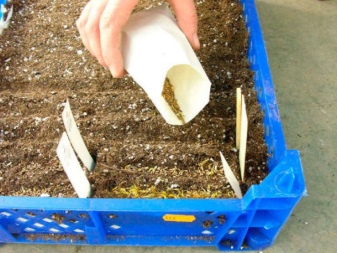
Young plants of ageratum can be watered only in the morning. 2 weeks before planting seedlings in the soil, the hardening procedure should be started, periodically taking the plants out into the open air. However, remember that it is still recommended to keep the seedlings in the shade - hardening should be carried out gradually. It is necessary to plant ageratum in small holes. In this case, the seedlings are placed so that they are in the ground at the same level at which they grew in seedling boxes. This should be treated with special care. Plants should be planted at a short distance from each other: about 10-12 cm. The appearance of the first flowers should be expected 2 months after sowing.
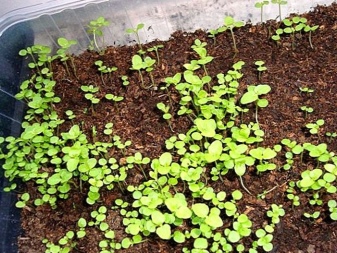
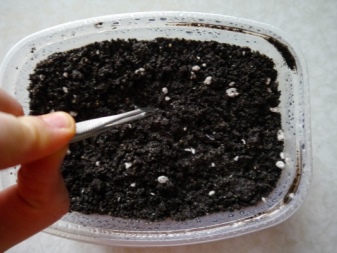
Despite the fact that, as a general rule, ageratum is a plant that is not very demanding in relation to the soil, the plant should be planted in a fairly light and non-acidic soilthere should also be a moderate amount of nutrients and minerals. Ageratum has a fairly branched root system, therefore, it can cope with a lack of water and high air temperatures. On the other hand, one should take into account the fact that the flower does not tolerate frost well and may even die.
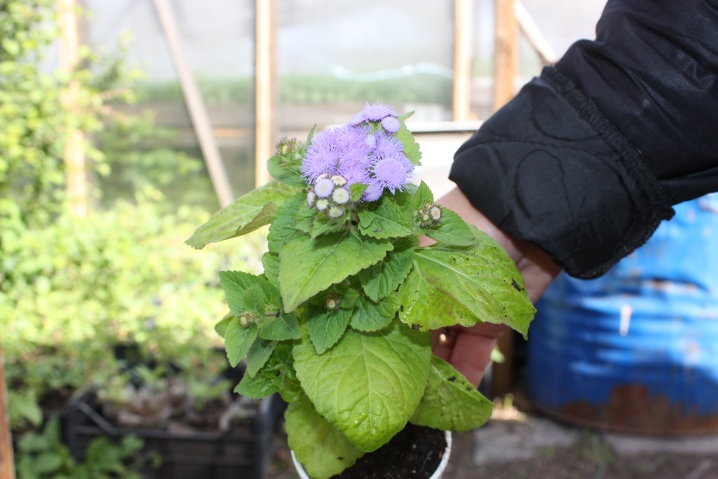
Care Tips
It is no secret that in order for the plant to actively grow and develop, it is necessary to follow some important rules for caring for it.

A haircut
A haircut is a care measure that will allow ageratum to actively grow and develop. So, in order to increase the intensity, as well as increase the duration of the flowering of the plant, during the summer period it is necessary to cut off all wilted inflorescences. Thanks to this, the ageratum will be able to release new young and fresh buds.
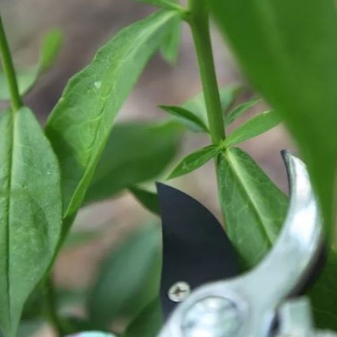
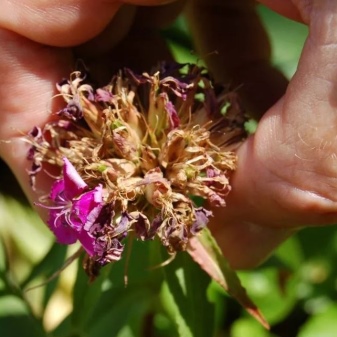
Watering
Ageratum, like any other plant, needs regular watering. However, it should be borne in mind that the amount of moisture should be moderate, without an excess. Besides, after the watering procedure, do not forget about the need to loosen the soil... Thus, you will provide air access to the plant's root system. The same procedure should be performed after heavy atmospheric precipitation (rain, snow, etc.).
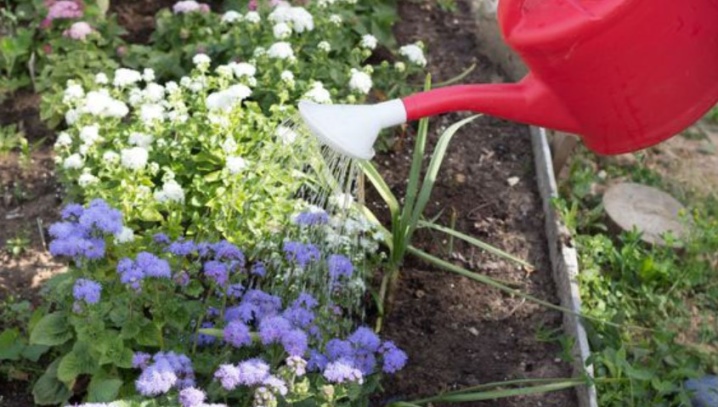
Top dressing
It should be noted that ageratum reacts positively to various kinds of feeding and fertilization. However, this should not be abused as it is recommended to use exclusively minerals. Top dressing of ageratum should be carried out quite regularly - 3 times a season. Moreover, the first time fertilization must be applied during the period of bud formation. In addition to the mandatory care measures described above, do not forget that ageratum needs regular weeding, during which it is necessary to remove all weeds, since they have a negative effect on the growth and development of the plant.
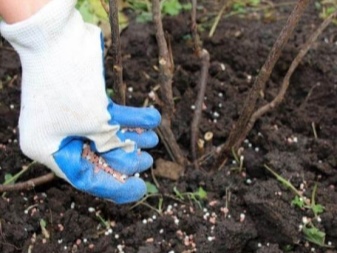

Diseases and pests
In general, we can conclude that ageratum is an unpretentious and undemanding plant when it comes to basic care measures. But at the same time, it should be borne in mind that the flower is susceptible to a large number of diseases, and also harmful insects and microorganisms can affect it.
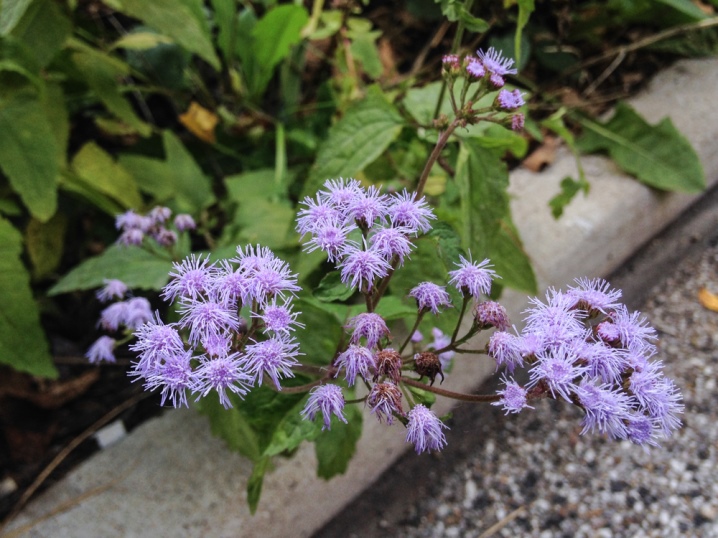
It is important to pay attention to the amount of moisture, as well as the level of plant access to atmospheric air.
If the roots do not get enough of it, but they receive a large amount of water, then with a high probability they will be susceptible to such ailment as root rot. If your flower is sick with this disease, then it will not be possible to save it - it will die in any case. Therefore, it is worth digging up diseased plants and burning them so that root rot does not spread to other bushes.
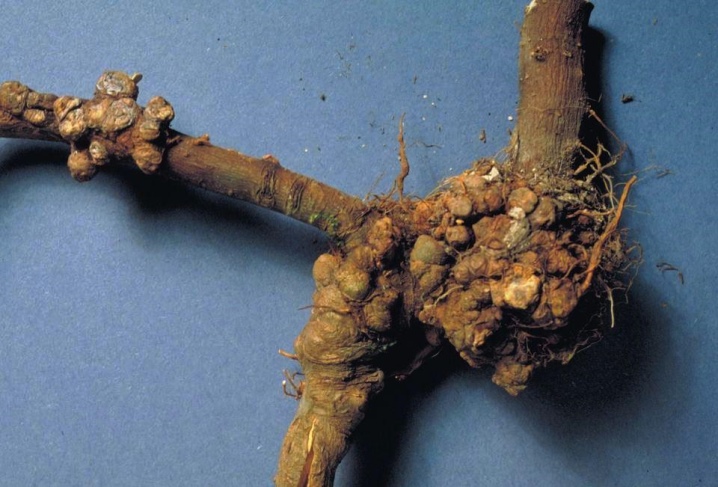
Another common plant disease is bacterial wilting. It occurs for no apparent or obvious reason, almost by accident. Most often, the disease appears at the initial stage of leaf chlorosis disease. In addition, the flower can be influenced by the so-called cucumber mosaic. In the event of this ailment, yellow blotches or even spots appear on the leaves of the ageratum, the stem of the plant becomes glassy, and the unblown buds begin to fade.
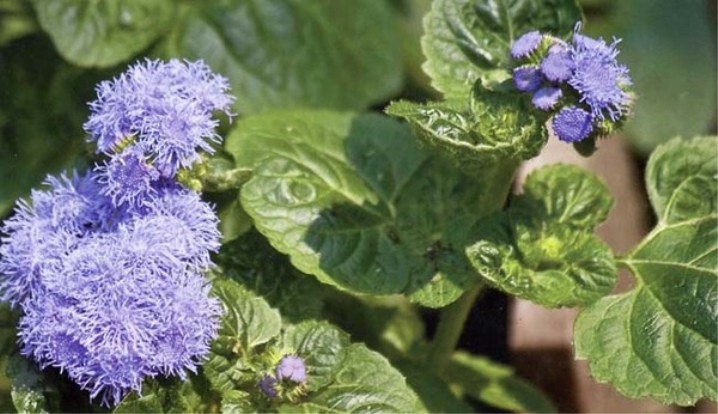
If you notice the symptoms of this disease, then you should immediately remove all affected areas of the plant, and all the remaining parts should be carefully treated with insecticidal preparations or natural herbal infusions (for example, from bird cherry, wormwood or tansy). As for harmful insects and microorganisms, it should be borne in mind that nematodes, spider mites and whiteflies can have a negative effect on ageratum... In order to deal with them, chemical agents should be purchased in specialized stores for gardeners.
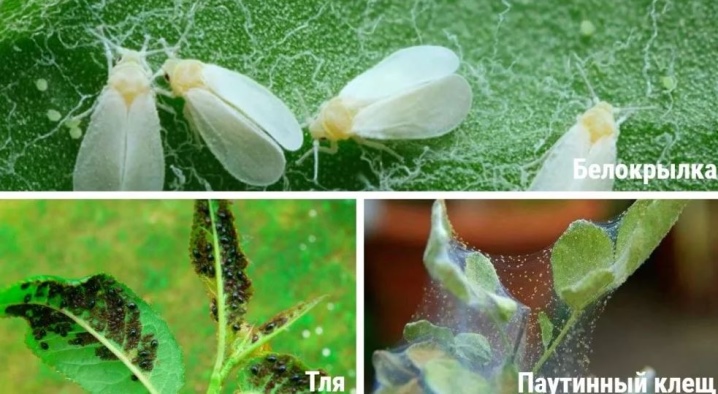
For information on how to grow seedlings from ageratum seeds, see the next video.







































































































The comment was sent successfully.